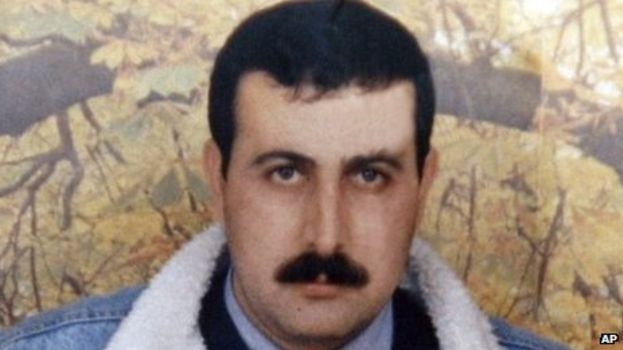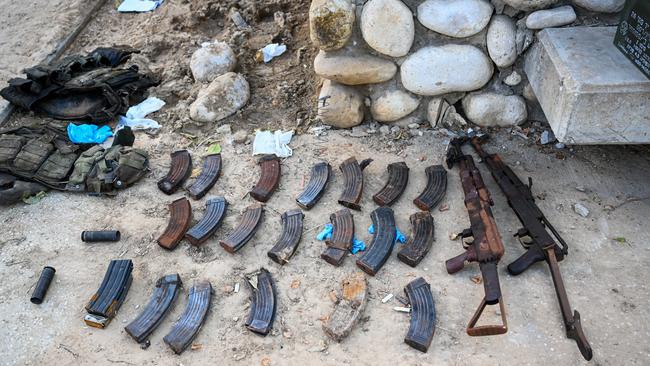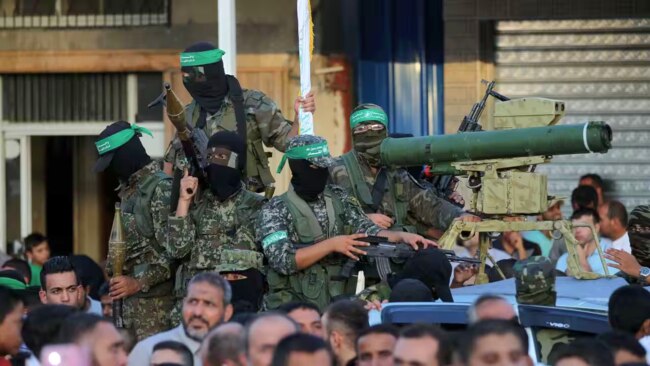Where does Hamas get its weapons? Suspects include North Korea
When Mossad assassinated Hamas’s chief arms dealer in 2010, security agencies were left with tantalising clues about the scale of his operations.

When Mossad assassinated Hamas’s chief arms dealer Mahmoud al-Mabhouh in Dubai in 2010, the world’s security agencies were left with tantalising clues about the scale of his operations.
Mabhouh was killed in a hotel near Dubai airport, where he had flown from Damascus, which was no surprise, since he was known to be based there under a variety of aliases.
More telling were his onward tickets: to Khartoum, the capital of Sudan, and to Beijing, where anyone who wants to travel to Pyongyang, in North Korea, has to change planes.

The fruits of such missions may have been revealed in the aftermath of the Hamas attacks on Israel of October 7. Videos of weapons seized from dead and captured militants show what appear to be North Korean-made F-7 rocket-propelled grenade launchers, according to experts from the Small Arms Survey, a specialist research group.
The F7 is a North Korean version of a relatively antique model from the Soviet era. That is typical of the arsenal of militant groups in the Middle East and elsewhere, which have been targeted for sales by the giant arms industries of states once in the Soviet Union’s orbit but since its collapse are looking for a broader range of clients.
Hamas is also well-equipped with the automatic rifle the world knows as a Kalashnikov AK-47 but which is in most cases an approved “knock-off”. Chinese, Bulgarian, Romanian and North Korean companies have all produced their own copies of the AK-47 at much cheaper prices, and it is those versions that groups such as Hamas use.

The routes they have followed to get into Gaza have been subject of intense scrutiny over the years from both Israel and its allies. Not all have come from North Korea. Iran, Sudan, and Syria have all been implicated in Hamas’s weapons purchases.
When it comes to North Korean weapons, the plethora of legitimate militaries that has bought them has confused matters.
Egypt, Gaza’s neighbour, was identified as the recipient of one giant shipment of North Korean weapons including F7s intercepted in 2017, ironically by the Egyptian navy at the behest of the United States. The navy was unaware of the clandestine purchase by its brothers in the army.
Egypt, though, regards Hamas as an enemy and would not have been passing weapons on. The most likely supply route was that overseen by Mabhouh – through a network of tunnels from Sinai.
The key intermediary in the trade at the time of his death was Sudan – hence the plane ticket there. Weapons deliveries were arranged to Khartoum, often by Hamas’s ally Iran, also a collaborator on military and nuclear projects with North Korea, and from there they were smuggled to neighbouring Egypt.

On one occasion in 2009, Israel bombed a convoy of weapons as it headed across the desert. On another, it is thought to have bombed an arms factory there.
Since Mabhouh’s death, though in a politically unconnected move, Sudan has made a gradual change from being part of the Iran-led “axis of resistance” to becoming a friend of Saudi Arabia, the United Arab Emirates and other Egyptian allies. President Sisi came to power in Egypt in 2013 and launched a major program of closing down the tunnels.
Since then, Iran has masterminded a remote missile-building program for Gaza, the products being hammered together in hidden workshops.
Some tunnels remain, and some shipments are thought to get through by sea, but it is likely that for small arms Hamas remains reliant on the arsenal built up under Mabhouh’s direction.





To join the conversation, please log in. Don't have an account? Register
Join the conversation, you are commenting as Logout